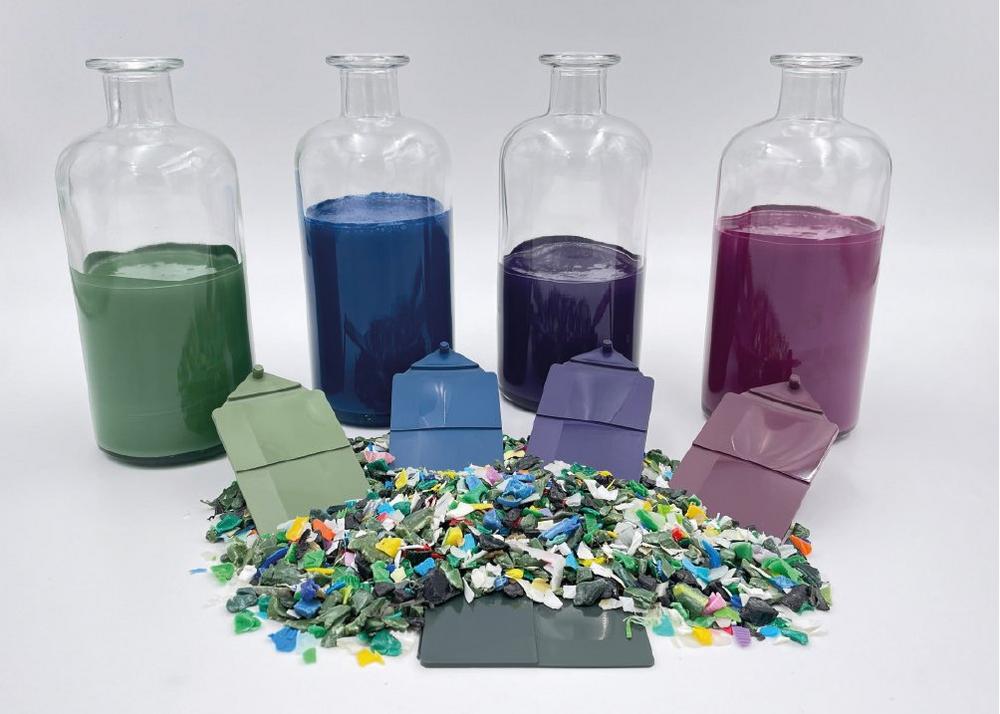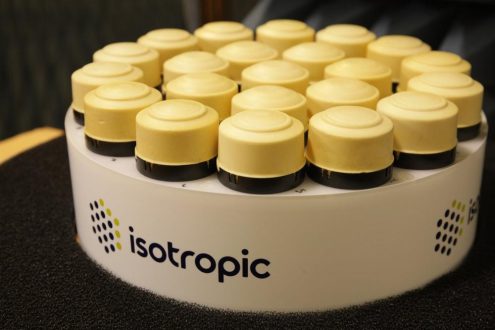
Recyclate coloring made easy
The use of recycled plastics is becoming increasingly important with simultaneously increasing demands on the properties. In addition to the mechanical characteristics, the color is also playing an increasingly important role, since recyclates are increasingly being used in consumer goods and food packaging – a trend that will definitely continue to gain in relevance.
Post-Industrial Recycled (PIR) plastics are processed according to type and color and can be colored with comparatively little effort. Although the post-consumer recyclates (PCR) are also sorted by material, they also contain foreign materials and are always a colored mix, which usually results in a shade of gray without the addition of colorants. Over-coloring this efficiently and homogeneously is a challenge that is made for liquid colors. Because the liquid concentrate already wets the recyclate chips in the feed area, so that the colorant is evenly distributed before the polymer is melted in the extruder. Moreover, it is irrelevant whether the recyclate contains different fractions, e.g. with regard to melt index and plastic type, since the universal carrier is well compatible with all materials. And since this is based on renewable raw materials, the proportion of fossil components in the product is also reduced in this way.
The illustration shows an example of PCR chips made of HD-PE, which were directly injection molded with different liquid colors. The plate at the front of the picture shows the original color of the recyclate, from which four attractive earth tones could still be produced despite the dark green basic tone.
Much more potential can be exploited if liquid single pigment dispersions are mixed by the user himself to create the finished color. The color formulation can then be quickly and efficiently adapted to the changing color of the PCR with minimal effort. And in the case of an upstream re-granulation of the recyclate, e.g. on a twin-screw extruder, inline color correction is even possible by feeding the „monos“ separately.
ROWASOL, founded in 2004, is a specialist for liquid colors and dosing systems. The product portfolio is supplemented, among other things, by the ROWASOL COLOR CUBE for resource-saving product handling. Both in extrusion and injection molding, the use of liquid color offers savings in coloring costs and in the production process in general. The industry focus is on the plastics processing industry.
ROWA GROUP Holding GmbH
Siemensstraße 1-9
25421 Pinneberg
Telefon: +49 (4101) 70606
Telefax: +49 (4101) 706203
http://www.rowa-group.com
Telefon: +49 (4101) 706-335
E-Mail: u.wilkens@rowasol.de
![]()



